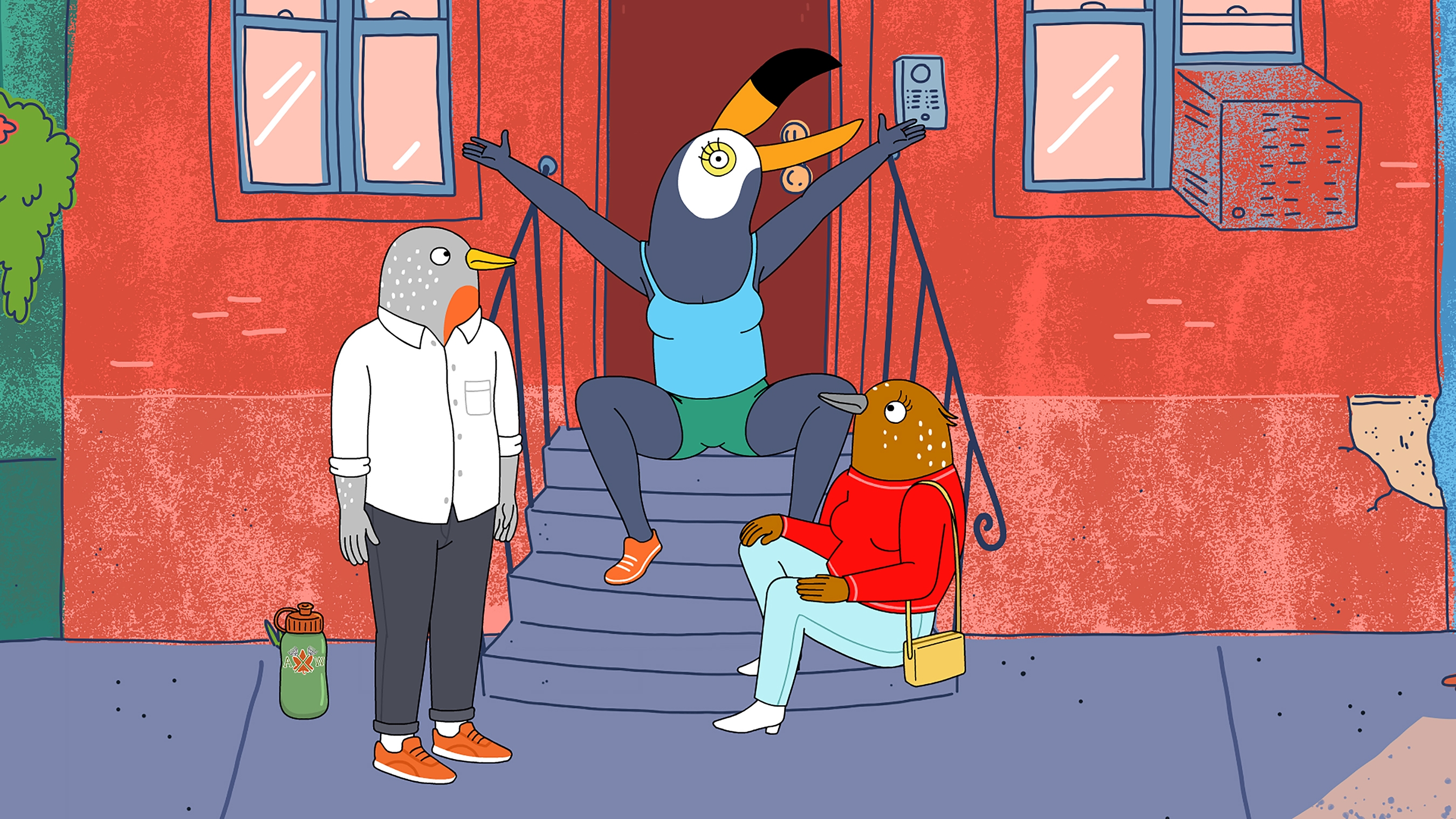Tuca & Bertie returns with a bonkers, delightful season 3
Adult Swim's animated comedy boasts razor-sharp wit, the oddest of odd couples, and thoughtful commentary on modern life

The absurdity of “adulting” as a Millennial—even the anthropomorphic bird kind—continues to fuel the zaniness of Tuca & Bertie. The former Netflix series created by Lisa Hanawalt is now housed by Adult Swim (a better match, it seems). And there’s plenty more fodder to play with in season three, as the show expands the cast of characters and storylines surrounding its titular duo. For those of us who enjoy watching the friendship play out between the chaotic good energy of one Tuca Toucan (Tiffany Haddish) and the lawful neutral vibe of one Bertie Songthrush (Ali Wong), this latest batch of episodes (that is, the ones that were screened before this review) is a true delight.
Following the flood that served as season two’s climactic finale—the one that all but decimated Birdtown—we first meet our dynamic duo with their respective roles reversed. As Tuca is thriving as a chatty tour guide alongside the waterways that now dominate the town’s cityscape (“To your right you will see the remains of Parakeet Park where I used to give out unsolicited haircuts,” she says after twerking atop a duck boat), Bertie finds herself floundering as a budding baking entrepreneur. It doesn’t help that Bertie’s boyfriend, Speckle (a never-sweeter Steven Yeun) is also moving up in the world, helping to rebuild the city with a focus on affordable housing. Because yes, even though this bonkers show loves to revel in its own craziness (this is a world where a toucan can giddily date a fig tree voiced by Matthew Rhys, after all), that does not mean it won’t comment on today’s pressing issues. Everything from NIMBYism and girlbossing to our broken health care system and alcoholism are handled with a levity that feels neither cheap nor exploitative.
But there’s no denying that, as its title suggests, Tuca & Bertie is at its best when it focuses on the odd couple at the heart of the show. Female friendship, which remains a rare central thematic concern within the world of post-Peak TV, is what anchors Hanawalt’s colorful animal-fueled dreamscape of a show. Even as the two birds struggle to help one another (during one episode even as they’ve both been eaten whole by snakes—yes, really), the love and care they have for each other guides them unconditionally toward the shared goal of merely making it through the day. Depicting a world that is clearly crumbling all around them (Birdtown seems to have barely survived the flood, with its crumbling infrastructure affecting everything from homelessness to public transit) and a system that seems designed to exploit their every kindness (Bertie’s do-good attitude keeps her from being a ruthless enough entrepreneur to succeed on her own), the Adult Swim series reminds us that what we should cherish and nurture are the relationships around us. Even, or especially, those that push us outside of our comfort zones.
Moreover, what truly makes Tuca & Bertie sing is its two stars. No matter how outrageous their dialogue (“Bertie, I don’t need a doctor anymore! This website says if I give myself a celery enema I’ll be cured!”), Haddish and Wong find a way to deliver comedic tour de force performances that make us root for a toucan who keeps failing upwards at her job and an anxious songbird who frets over the Yak reviews on her budding bakery business. Indeed, the voice work all around—including new additions to the cast like Justina Machado as a famous chef eager to offer Bertie a job on the spot and Rhys as the obviously very British Figgy (tree)—make the ever-growing ensemble of characters in Birdtown some of the funniest on television.
As with BoJack Horseman (where Hanawalt served as a producer), part of the joy of watching Tuca & Bertie is the thrill of seeing how many sight gags and puns its writers and animators can cram into any given frame. When Tuca has to visit Hive Medical and is seen by a throng of bee doctors to deal with her chronic crippling menstrual pains, we see Bertie reading Beeple magazine while the rooms are adorned with art by Anne Beeddes. Likewise, some of the throwaway jokes are just utterly delightful: Hearing Tuca say that a specific piece at the “Evocative Juxtaposition In New Birdtown Art” exhibit at the Gagoosen gallery could’ve been painted by a baby before it’s revealed she’s been staring at a painting that reads “I struggle with object permanence” is but one example of the razor-sharp wit the show nails on any given scene.
If some of the subplots at times can feel rather silly or slight—and sometimes both (see the snake infestation in the season’s third episode)—that is less a critique than an apt description. With its quirky character designs and its even zanier sense of humor, Tuca & Bertie lives in its own rarified animated space where a tree can be an alcoholic and a series of bug-themed baked goods make for great workplace-comedy fodder. The only thing for us to do is enjoy the ride and relish this most outrageous modern menagerie and perhaps learn something about ourselves as a toucan fights with her OB-GYN over what holes the doctor will not treat.